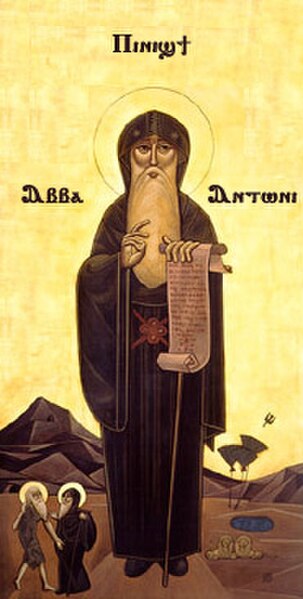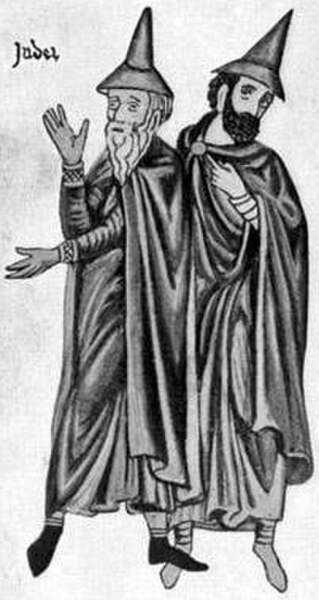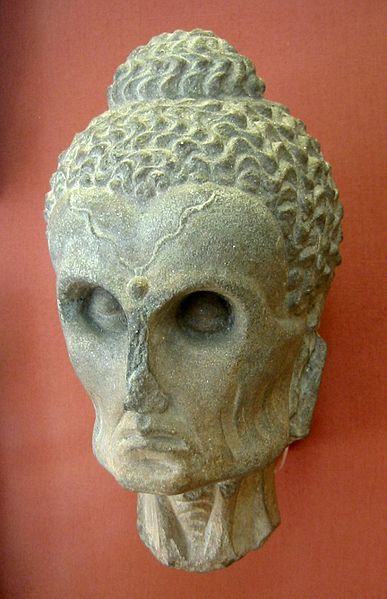Simeon Stylites or Symeon the Stylite was a Syrian Christian ascetic, who achieved notability by living 37 years on a small platform on top of a pillar near Aleppo. Several other stylites later followed his model. Simeon is venerated as a saint by the Oriental Orthodox Churches, Eastern Orthodox Church, and Roman Catholic Church. He is known formally as Simeon Stylites the Elder to distinguish him from Simeon Stylites the Younger, Simeon Stylites III, and Symeon Stylites of Lesbos.
6th-century depiction of Simeon on his column. A scallop shell symbolizing spiritual purity blesses Simeon; the serpent represents demonic temptations (Louvre).
16th-century icon of Simeon Stylites. At the base of the pillar is his mother's body. (Historic Museum in Sanok, Poland)
Ruins of the Church of Saint Simeon with remains of his column (centre, now topped with a boulder)
A 1901 illustration by W. E. F. Britten for Alfred Tennyson's St. Simeon Stylites.
Asceticism is a lifestyle characterized by abstinence from sensual pleasures, often for the purpose of pursuing spiritual goals. Ascetics may withdraw from the world for their practices or continue to be part of their society, but typically adopt a frugal lifestyle, characterised by the renunciation of material possessions and physical pleasures, and also spend time fasting while concentrating on the practice of religion or reflection upon spiritual matters, which is thought by some to allow the practitioner's core of consciousness to expand and connect with the infinite universal consciousness. Some individuals have also attempted an ascetic lifestyle to free themselves from addictions to things such as alcohol, tobacco, drugs, entertainment, sex, food, etc.
Coptic icon of St. Anthony the Great, father of Christian monasticism and early anchorite. The Coptic inscription reads 'Ⲡⲓⲛⲓϣϯ Ⲁⲃⲃⲁ Ⲁⲛⲧⲱⲛⲓ' ("the Great Father Anthony").
A Sufi Muslim ascetic (fakir) in Bengal during the 1860s
Chassidei Ashkenaz were a Jewish mystical and ascetic movement in medieval Germany.
The Buddha as an ascetic. Gandhara, 2nd–3rd century CE. British Museum








